
AMPHIBIANS
Dual-lives, Environmental Bellwethers

AMPHIBIANS
Dual-lives, Environmental Bellwethers
Amphibians are old! The earliest amphibians appeared around 370 million years ago, developing from lobe-finned fish, that used their fins to crawl on ocean floors. Amphibians ruled the land until reptiles and mammals came along. Now, they are much smaller in size, and less diverse: today almost 90% of all species of amphibian are frogs. Amphibians are cold-blooded tetrapods – four-limbed vertebrates – that typically hatch as larva in water. As they mature, they transform and develop the ability to breath air and walk on land (though they often remain adept swimmers). They are highly sensitive to their environments compared to many other species, and can serve as “canaries in the coalmine” for ecological disturbances.
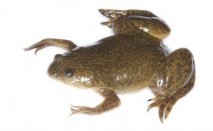 African Clawed Frog
African Clawed FrogThis species of frog is completely aquatic and has no tongue or teeth. They shove food into their mouth and down their…
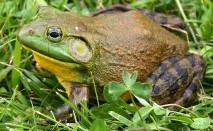 American Bullfrog
American BullfrogThese territorial frogs are named for their loud, deep call that reminds some of the roar a bull. They are often found…
The American toad is a commonly occurring species throughout the Eastern United States and Canada and they can live almost…
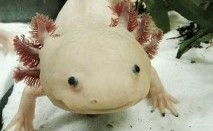 Axolotl
AxolotlThese completely aquatic salamanders are also known as the Mexican salamander or Mexican walking fish. They are a neotenic…
This species of frog is native to the Southeastern United States. They are variable in color but recognizable by the dark,…
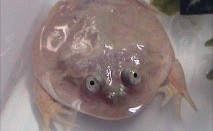 Budgett’s Frog
Budgett’s FrogThese frogs, sometimes called hippo frogs, are natives of Paraguay, Argentina, Brazil, and Bolivia. Budgett’s…
 Cane Toad
Cane ToadThe Cane Toad is a very large, terrestrial toad native to the extreme southern United States and Central and South America.…
These small newts are black with bright-orange coloration on their ventral sides which they use to ward off predators…
 Coastal Plains Toad
Coastal Plains ToadThe range of this widespread toad extends from the state of Veracruz in Mexico, along the coast of the Gulf of Mexico,…
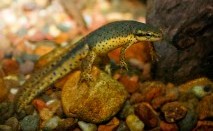 Eastern Newt
Eastern NewtAlso called red-spotted newts, these beautiful amphibians reside in lakes, ponds, streams, or nearby wet forests. They…
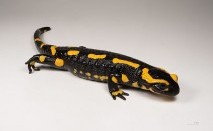 Fire Salamander
Fire SalamanderThis enigmatic species is arguably the best known salamander species in Europe. It is black with varying proportions of…
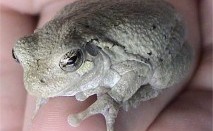 Gray Tree Frog
Gray Tree FrogThis small, arboreal frog is widespread in the Eastern United States and Southeastern Canada. They are able to camouflage…
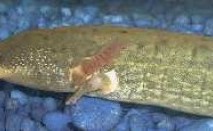 Greater Siren
Greater SirenThese eel-like amphibians are one of the largest amphibians in North America. They are aquatic and can be found in streams,…
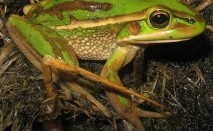 Green and Golden Bell Frog
Green and Golden Bell FrogEven though they are perfectly good climbers, this species of tree frog prefers to live on the ground. They are one of…
 Horned Marsupial Frog
Horned Marsupial FrogThe horned marsupial frog is an arboreal species native to the tropical moist lowland forests and montane cloud forests…
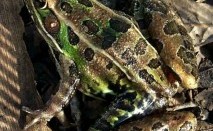 Leopard Frog
Leopard FrogLeopard frogs are common across much of the U.S. They are named for their striking green and black leopard-like markings…
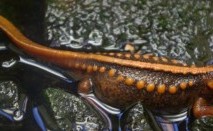 Mandarin Newt
Mandarin NewtThis uniquely beautiful amphibian is also known as the emperor newt. Their bright orange glands, arranged in two parallel…
This frogs are endemic to a very small area in Southwestern Australia. Though drably colored on their dorsal surfaces,…
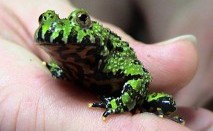 Oriental Fire-Bellied Toad
Oriental Fire-Bellied ToadActually a type of frog, these brightly colored, semi-aquatic species are found in Korea, northeastern China, and adjacent…
 Pacman Frog
Pacman FrogAlso known as South American Horned Frogs, these frogs grow to a massive size and have insatiable appetites. Pacman frogs…
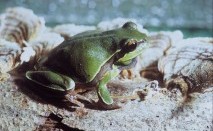 Pine Barrens Tree Frog
Pine Barrens Tree FrogThese attractive little green frogs can be distinguished from the American green tree frog by the white-bordered lavender…
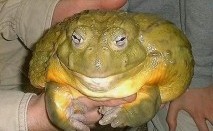 Pixie Frog
Pixie FrogThe Pixie Frog, also known as the African Bullfrog, is the largest species of frog in South Africa. These giants will…
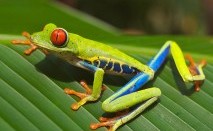 Red Eyed Tree Frog
Red Eyed Tree FrogThe Red-eyed tree is an arboreal inhabitant of tropical forests from Mexico through Central America to Columbia. They…
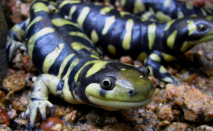 Tiger Salamander
Tiger SalamanderTiger salamanders are type of mole salamander native to North America named for their beautiful coloration – usually…
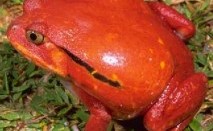 Tomato Frog
Tomato FrogThese bright red to yellowish-orange colored frogs are native to the forests and fields of Madagascar that get heavy rain…
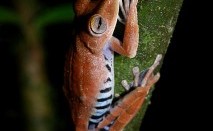 Troschel’s Tree Frog
Troschel’s Tree FrogThis species of frog is native to South America and inhabits tropical and subtropical moist lowland forest and river environments.…
This species is a large toad native to western North America. It will eat any kind of insect it can catch and is a powerful…
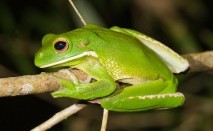 White-Lipped Tree Frog
White-Lipped Tree FrogThe species of frog, also known as the giant tree frog, is endemic to the rainforests of Northern Queensland, New Guinea,…
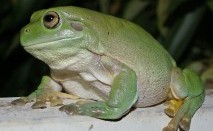 Whites Tree Frog
Whites Tree FrogAlso known as the Australian, or Dumpy tree frog, is a docile, long-lived frog that is often found near human dwellings.…
Amphibian skin is not covered in hair, feathers, or scales. It is thin and permeable, which allows them to actually breathe and drink through their skin! Their skin is not watertight, but they have mucous glands that produce “moisturizing” secretions to help keep them from drying out. As many amphibians have poisonous skin, their skin also serves as a handy defense mechanism… and on top of that, it serves as a tasty treat after they shed it (it is not uncommon for amphibians eat their own sloughed off skin)!
 Discover Animals is a web-based educational resource offered by the NAIA
Discover Animals is a web-based educational resource offered by the NAIA